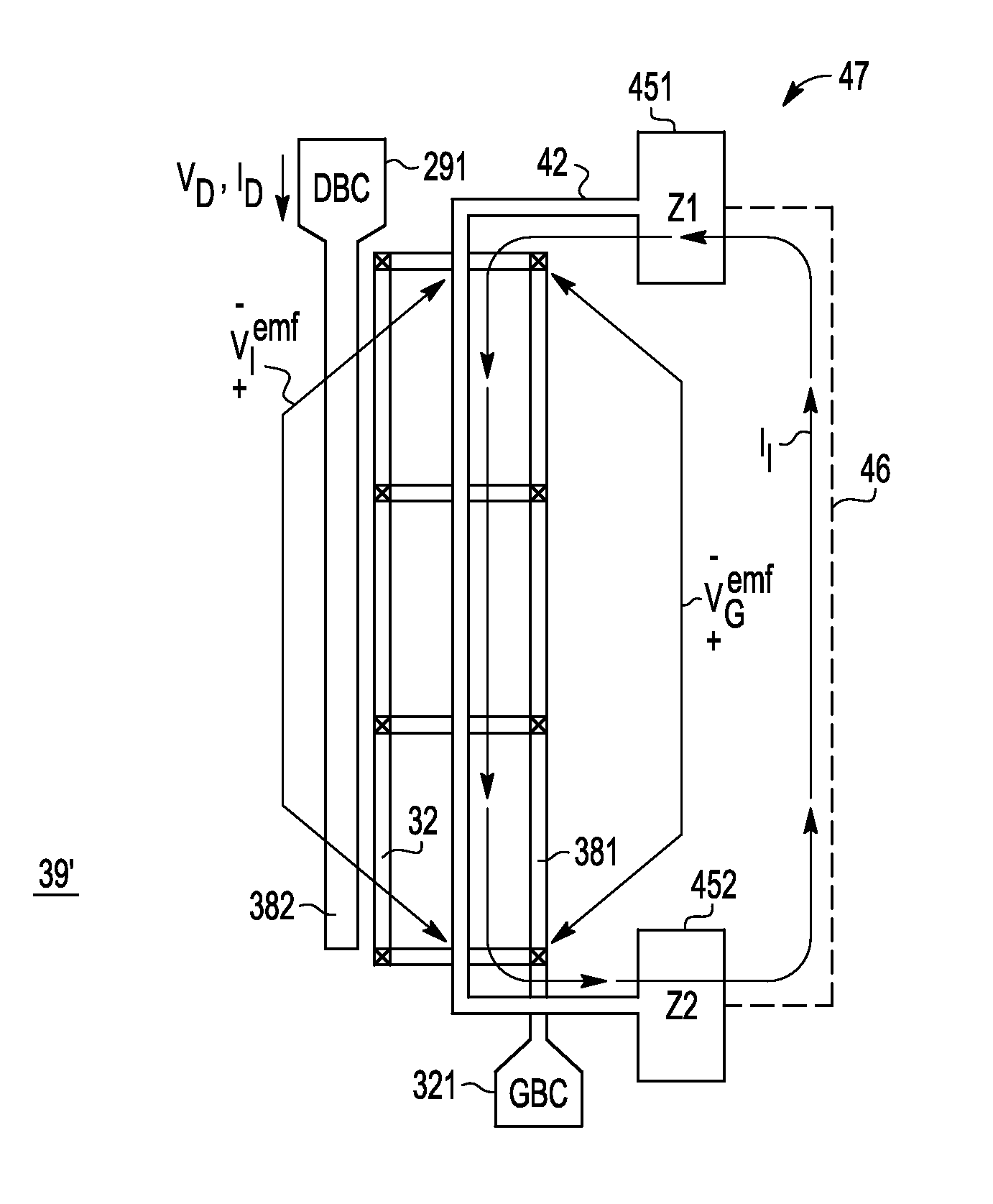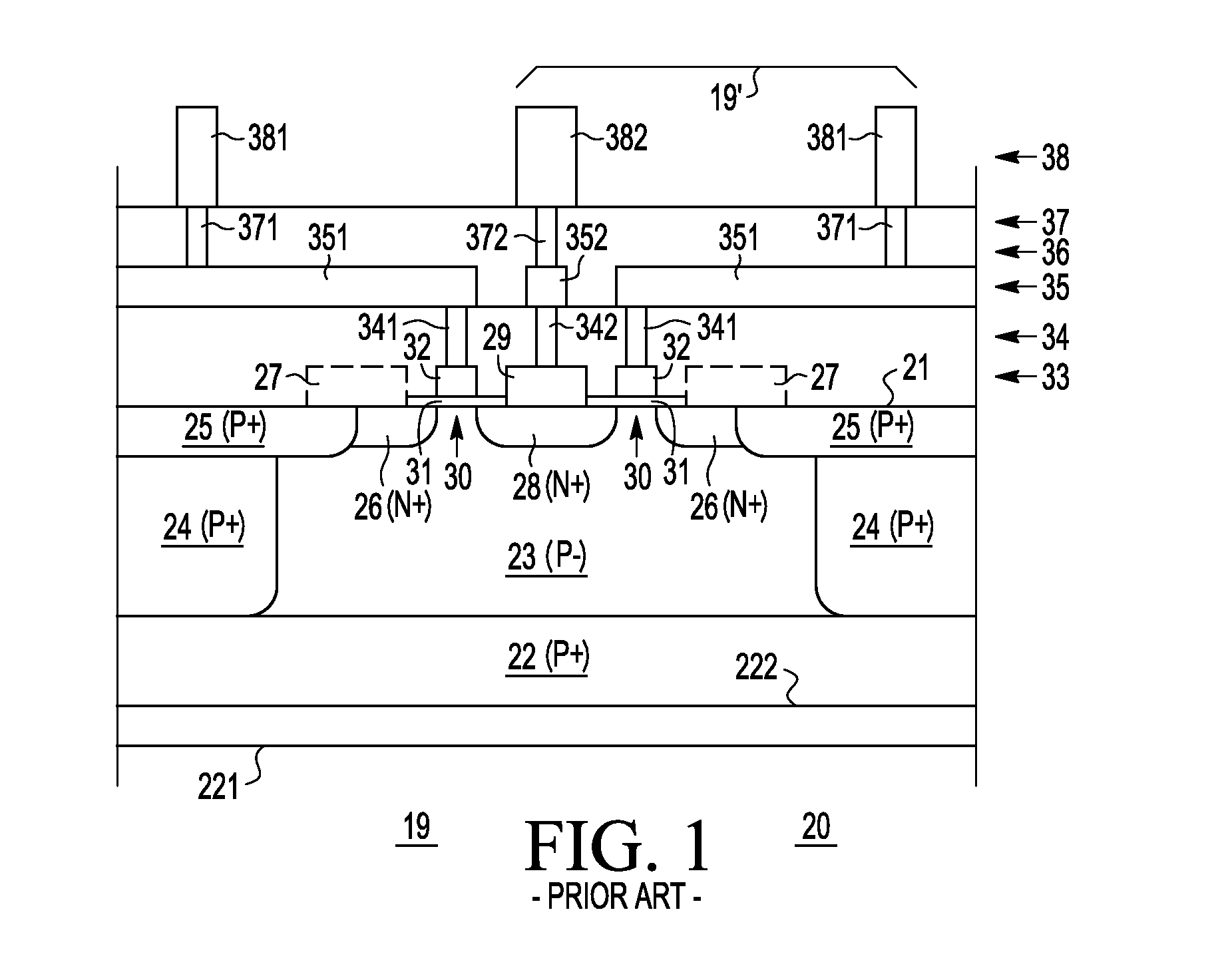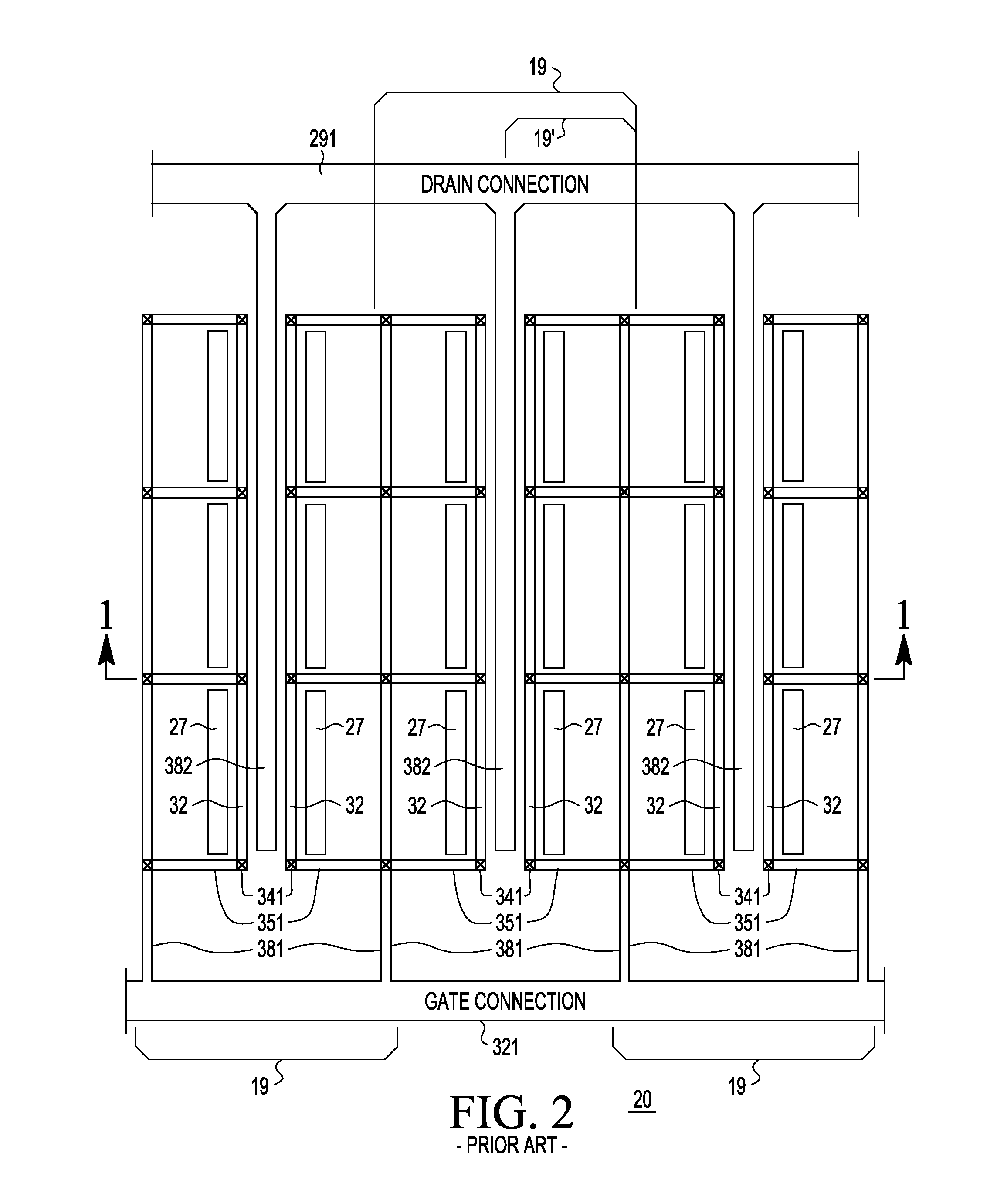Semiconductor device with feedback control
a technology of feedback control and semiconductor devices, which is applied in semiconductor devices, amplifiers, amplifier modifications to extend bandwidth, etc., can solve the problems that the feedback from the output electrode to the input electrode can adversely affect the overall device and or circuit behavior, and the art electric field containment approaches do not deal with all of the feedback effects that can affect high frequency power devices
- Summary
- Abstract
- Description
- Claims
- Application Information
AI Technical Summary
Benefits of technology
Problems solved by technology
Method used
Image
Examples
case 1
Special ZT→∞. In this case the second term within the numerator parentheses vanishes, and in this limit
S12->2ZO(-jωMGD+1gm+jωCX)ΔS.Eq.21
This corresponds to a standard LDMOS device without inductive interposer 42, that is, to portion 19′ of FIG. 3 and prior art device 19, 20 of FIGS. 1-2. The infinite impedance of ZT prevents any current flow in inductive interposer 42 and no inductive feedback compensation effect is present.
Special case 2: ZT=1 / (jωCT). In this case, ZT is in the form of, for example, an integrated capacitor of value CT chosen to resonate with the self inductance of inductive interposer 42. Substituting the expression for ZT into the equations for S12 makes the resonance explicit, and
S12=2ZO(-jωMGD-ω2MGIMIDRI+j(ωLI-1ωCT)+1gm+jωCX)ΔS.Eq.22
Special case 3: ZTRIT and RI have the effect of allowing large current flow in interposer 42, which current opposes the ordinary mutual inductance coupling between drain and gate and reduces the total effective drain-gate mutual ...
first embodiment
[0038] there is provided an electronic element (39′, 39, 40), comprising, an amplifying device having an input (32) with an input conductor (381) and an output (28, 29) with an output conductor (382), wherein the input (381) and output (382) conductors are substantially parallel for a first distance (391) and spaced apart by a second average distance (392), and an electrically conductive inductive interposer (42) forming part of a closed loop circuit (47), wherein the inductive interposer (42) is located between the output conductor (382) and the input conductor (381). According to a further embodiment, a ratio R of the first distance (391) divided by the second distance (392) has a value 1≦R≦100. According to a still further embodiment, R has a value 4≦R≦60. According to a yet further embodiment, the inductive interposer (42) is DC electrically isolated from the output conductor (382) and the input conductor (381). According to a yet still further embodiment, the inductive interpos...
second embodiment
[0039] there is provided a MOSFET device (39, 39′, 40) having a gate (32) and a drain (28), comprising, one or more input lead (381, 371, 351, 341) coupled to the gate (32), one or more output lead (382, 372, 352, 342, 29) coupled to the drain (28), wherein the one or more input lead (381, 371, 351, 341) and the one or more output lead (382, 372, 352, 342, 29) have portions (381, 382) that are spaced apart by at least a first distance (392) and substantially parallel along a second distance (391) larger than the first distance (392), and an electrically conductive interposer lead (42) adapted to be magnetically coupled when operating to the portions (381, 382) of the one or more input lead (381, 371, 351, 341) and the one or more output lead (382, 372, 352, 342, 29), the interposer lead (42) forming part of a closed loop circuit (47). According to a further embodiment, when operating a voltage induced on the portion (381) of the one or more input lead (381, 371, 351, 341, 32) by a c...
PUM
 Login to View More
Login to View More Abstract
Description
Claims
Application Information
 Login to View More
Login to View More - R&D
- Intellectual Property
- Life Sciences
- Materials
- Tech Scout
- Unparalleled Data Quality
- Higher Quality Content
- 60% Fewer Hallucinations
Browse by: Latest US Patents, China's latest patents, Technical Efficacy Thesaurus, Application Domain, Technology Topic, Popular Technical Reports.
© 2025 PatSnap. All rights reserved.Legal|Privacy policy|Modern Slavery Act Transparency Statement|Sitemap|About US| Contact US: help@patsnap.com



